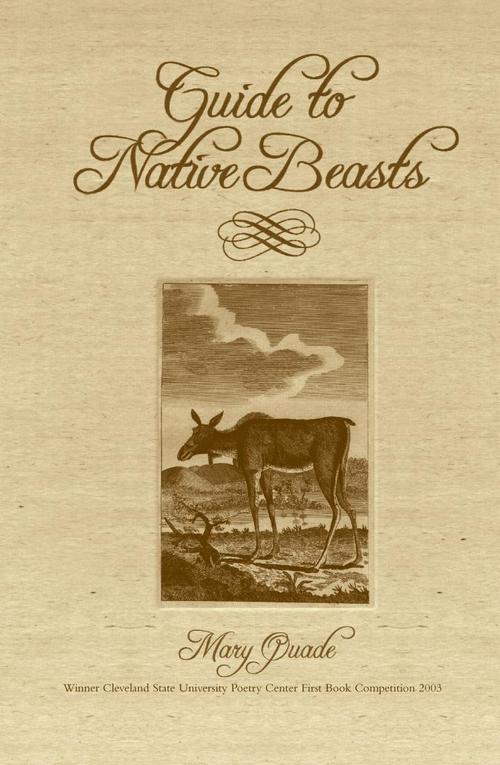I live near a freeway overpass, and can hear the cars rushing under if I am quiet. They sound like wind trapped in a dream-corridor, softly insistent. The sound of the cars reminds me of taking road trips further into the Midwest: Indiana, Illinois, Wisconsin, Minnesota. In her poem “Giant Fiberglass Cow,” Mary Quade addresses a roadside statue I might have seen while traveling:
GIANT FIBERGLASS COW
Cow,
your brown wears thin from midnight rides
of teenage rodeo wanna-bes.
Your side bears brands from cigarettes.
Your blue eyes fade to dreamy white;
you stand like a sleepwalker in the parking lot,
unwitting prop of the cheese gift shop.
Small things gravitate toward large.Now the interstate sleeks through town
and hauls along a fast food joint,
smearing the sky with its margarine mmm –
You glow; the headlights churn around, around.
You bow, a harmless beast
accumulating grime and trust,
harboring a pastoral conspiracy.I know I’m not the only one to lie beneath
the moon of your udder
and drink the milk-beams streaming down
and strain to hear the wisdom of your lowing.
The city grows.
So when you go, don’t leave me here,
unweaned,
too slow with cream to follow.
The speaker first addresses the statue and describes some of the ways it is used. The “teenage rodeo wanna-bes” pretend to ride it, visitors put out cigarettes against its hard surface, and “the cheese gift shop” has made it a landmark and “prop.” The statue “stand[s] like a sleep walker in the parking lot” while it is ridden, burned, and displayed. While sleep walkers’ bodies roam through familiar environments, they are elsewhere. Through whose worlds does the cow roam? Of what does the cow dream? And what does the cow mean, and to whom? Whether fiberglass or flesh, cows’ bodies are used: the dairy cow produces the milk that is made into the cheese the statue cow advertises. The statue cow’s largeness seems to attract “things” (the people, the gift shop) that, in this poem, are physically smaller. The statue looms large.
The “margarine M” “haul[ed] along by the interstate” advertises fast food while the statue cow advertises cheese and gifts. But suspensions and expansions of meanings keep appearing in this poem: for example, the “M” of The Golden Arches suggest oil-based margarine, while the statue is aligned with milk-based cheese. Headlights “churn[ing]” nothing illuminate this sleepy drama of meaning and scale. The statue cow “accumulat[es]” what humans project onto it (“grime and trust” and other intensely felt, vaguely articulated needs and desires). It appears “harmless,” though the speaker suspects the statue cow also “harbors a pastoral conspiracy” which is hidden in plain sight, concealed within its monumental presence.
The speaker finally tells the statue cow that she, like others, “lie[s] beneath / the moon of [its] udder, consuming an idea and feeling of milk, “drink[ing] the milk-beams streaming down.” She feeds on the statue’s elusive promises of community and nourishment, among other things. Perhaps she also feeds on the state’s strangeness. “The city grows,” and though the statue cow appears fixed, it is also fading. Where, finally, will this “sleep walker” go? The speaker will be “too slow with cream to follow” and so must remain behind, inside her (and our) own expansive dreams.
“Giant Fiberglass Cow” appears in Quade’s collection Guide to Native Beasts, which I hope you will seek out and read, slowly. Revelations unfold alongside their complexities in these patiently attentive and lingeringly thorough poems. Quade’s poems return me to places I may have “sleek[ed] through.” They park my car and invite me see the peculiar, insistent forms of gravity stationed at the margins of what I thought I noticed, or in the centers of what I thought I knew.
For more information about giant fiberglass cows, have a look here and here.
Image: Cover of Guide to Native Beasts.
Poem: “Giant Fiberglass Cow” appears in Quade, Mary. Guide to Native Beasts. Cleveland: Cleveland State University Poetry Center, 2003.

